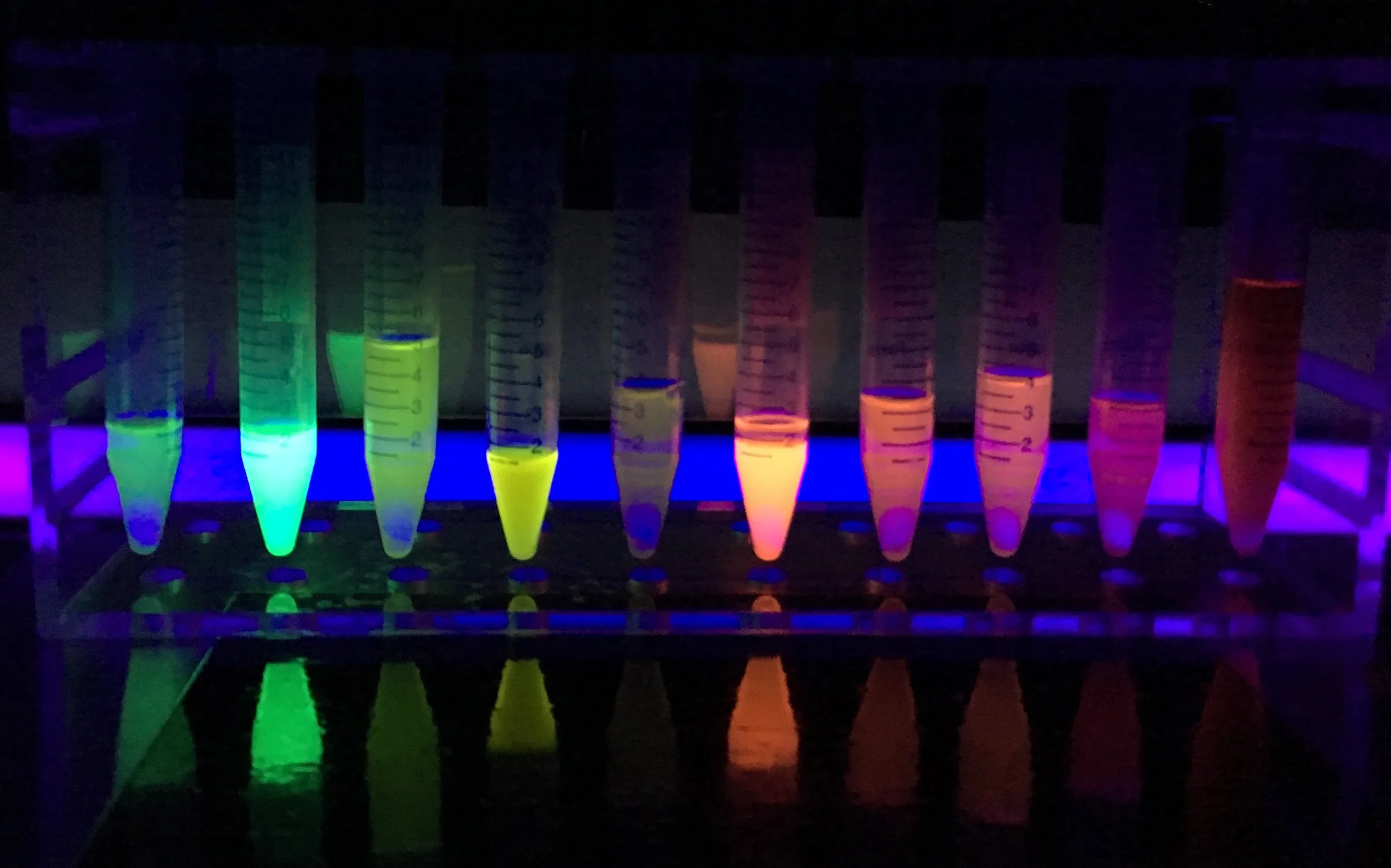
Fluorescence Models for Turbid Suspensions
CLARiTY is power.
CLARiTY is achieving a broader perspective.
CLARiTY frees you.
CLARiTY UV/Vis spectrophotometers acquire accurate fluorescence spectra on all light absorbing samples, not just on clear ones.
All of your experience tells you this makes no sense.
But your experience is with spectrophotometers that use a cuvette.
CLARiTY models use a DSPC, a ‘DeSa Suspension Presentation Chamber,’ a novel sample holder which includes a quartz integrating cavity packed in a highly reflective chamber.
The only means of light entering the DSPC is through an inlet port; the only means of light exiting the DSPC is through the outlet port and detector. “Scatter” – light which enters the cuvette but scatters 360° rather than straight into the detector – cannot happen.
Achieving a broader perspective:
Think about it: a clear solution can be very limiting.
You might consider this unavoidable and/or of minimal consequence. If so, you stay with our spectrophotometers for clear solutions; we make many!
But! If you care to make measurements of protein in their membrane, or nanoparticles in suspension, or intact tissue, or any other non-clear sample, the CLARiTY is your answer.
With CLARiTY, you are no longer required to distance yourself from the sample – and thus from the results – that would be your first choice if scatter didn’t matter to the spectrophotometer.
Frees you:
You are freed to study exactly the sample in exactly the environment of primary value. And! You are freed from the talent, time, resources, and expense of changing the sample of interest to a clear subset that a cuvette spectrometer demands.
Best Results. Least Waste
Power:
With CLARiTY, you can do work like this:
In Situ Capture of the Changing Electron Transport Chain (ETC) Using UV-vis Absorbance Spectrophotometry and other work shared on https://olisclarity.com/research and https://olisclarity.com/experiments
The OLIS CLARiTY: Where you dictate what the sample is!
-

OLIS CLARiTY 245
Ideal for live cells to nanoparticles
High-performance scanning Uv/Vis spectrophotometer which is equally an absorbance and fluorescence system.
240-800 nm
Easy and economical upgrade potential to CD and/or CPL (OLIS DSM 245)
-

OLIS CLARiTY VF
The perfect instrument for many sample types: organic, inorganic, biological, materials, and more.
Factory configured for UV, Vis, or both
Specify absorbance or fluorescence configuration, which can be changed between measurements
-

OLIS RSM 1000
Developed for stopped-flow kinetic studies, this unique and patented scanning spectrophotometry system captures 1,000 scans per second with milliabsorbance sensitivity
Laser/ flash photolysis at 1,000 points per 0.5 milliseconds
No diode array or CCD is superior for speed, sensitivity, & wavelength specificity
Looking for models for turbid suspensions that are for both Fluorescence and Absorbance? Click here.
The CLARiTY Advantage
Integrating Cavity UV/Vis Spectrophotometers – CLARiTY Models – are for Clear and Not Clear Samples!
Everyone knows about cuvettes. The most common is a 1 cm² version. Short pathlength cuvettes are the alternative for high absorbance studies. Masked cuvettes are used for low volume samples. Cuvettes must be quartz for UV (nominally 170-400 nm); glass and plastic cuvettes can be used for visible and NIR range.
Continue…
The Short and Long of It.
The Short
A single page piece, circa 2014, on using CLARiTY to follow metabolism in the electron transport chain:
“Today, research using a new integrating cavity spectrometer has demonstrated that isolated cell components do not act the same as when those components are in their native environment … when they are not in the environment in which they were designed to function, they may behave differently.”
The Long
A 16 page chapter, circa 2020, on using CLARiTY:
“One thing is certain: one way to understand how a protein functions in an intact organism is to actually observe that protein as it functions in the intact organism. This paper provides an example of just such an observation.”
You achieve a beginner’s mind by dropping all expectations and preconceived ideas—shutting off autopilot—and seeing things with an open mind and fresh eyes—like a beginner, like a child.
Beginner’s mind or Shoshin has proven to be a great tool for my professional, creative, and personal life. I stumbled upon this concept when I was learning to meditate.






